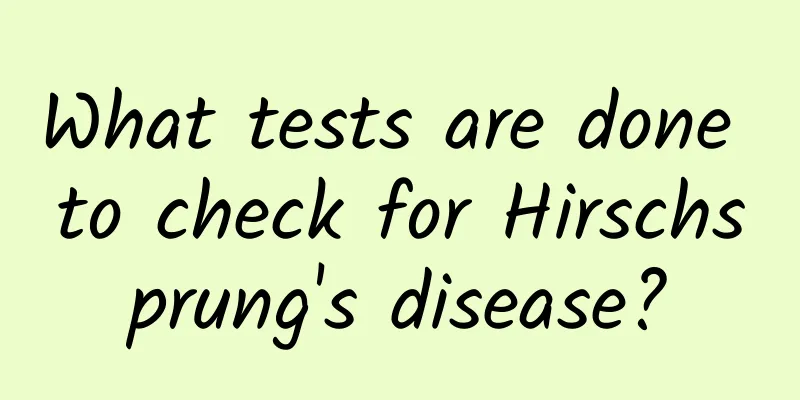Methods of early prevention of polio

|
Polio is an acute infectious disease caused by the polio virus. The main clinical manifestations include fever, sore throat and limb pain. Some patients may develop flaccid paralysis. During epidemics, latent infection and no paralysis are the most common cases. The incidence rate in children is higher than that in adults. Here are some methods for early prevention of polio, I hope it will be helpful to everyone. How to prevent polio (I) The earliest used vaccine for automatic immunity was the inactivated polio vaccine (Salk vaccine). After intramuscular injection, it is effective in protecting susceptible people. Because it does not contain live vaccines, it is also very safe for immunocompromised people. Some countries have achieved significant results in controlling and almost eliminating polio by using inactivated vaccines alone. However, the immunity caused by inactivated vaccines is short-lived, and repeated injections are required. It does not cause local immunity, and the preparation price is expensive. However, in recent years, the preparation has been improved. After three vaccinations in the second month, the fourth month, and the 12th to 18th month, 99% of the vaccine recipients can produce three types of antibodies, which can last for at least 5 years. Attenuated live vaccines are widely used at present. This live vaccine virus has been passaged for many times in tissue culture and has no or very little toxicity to the human nervous system. After oral administration, it can reproduce in the intestinal tissue of susceptible people, causing the same type of neutralizing antibodies in the body to grow rapidly. At the same time, because it can produce secretory IgA, the immunity of the intestine and pharynx is also enhanced, which can eliminate the invading wild strains and cut off its spread among the population. In addition, the live vaccine virus can be excreted from the body and infect the contacts so that they can indirectly obtain immunity, so its immune effect is better. Three types of sugar pill vaccines have been made, which can be stored at 2-10℃ for 5 months, 20℃ for 10 days, and 30℃ for only 2 days, so it should still be refrigerated (4-8℃). Susceptible children aged 2 months to 7 years are the main targets of vaccination. However, children of other ages and susceptible adults should also be vaccinated. Large-scale vaccination should be carried out in winter and spring, and taken orally on an empty stomach 2 or 3 times. Do not take it with hot water to avoid inactivating the virus in the vaccine and losing its effect. Sugar pill vaccine is divided into type 1 (red), type 2 (yellow), type 3 (green), type 2 and 3 mixed sugar pill vaccine (blue), and type 1, 2, 3 mixed sugar pill vaccine (white). It is taken from 2 months old, divided into three oral doses, and can be taken one pill of type 1, 2, and 3 each time, or one pill of type 1, 2, and 3 mixed vaccine each time. The latter has been proven to have good immune effect, less frequency of administration, and less prone to missed doses, so my country has gradually switched to three types of mixed vaccines. Each oral dose must be at least 4 to 6 weeks apart, preferably 2 months apart, to prevent possible interference. To strengthen immunity, it can be repeated once a year for 2 to 3 consecutive years, and once again before school entry at the age of 7. Type-specific antibodies can be produced in the body about 2 weeks after oral vaccination, reaching a peak within 1 to 2 months, and then gradually weakening. After 3 years, half of the children's antibodies have significantly decreased. Oral vaccination rarely causes adverse reactions, and occasionally mild fever and diarrhea. Patients with active tuberculosis, severe rickets, chronic heart, liver, and kidney diseases, as well as those with acute fever, should not take the vaccine for the time being. There are reports that the neurotoxicity of the vaccine virus strain to monkeys can increase after repeated passage through the human intestine. In recent years, countries that have widely adopted OPV have found cases of paralysis confirmed to be caused by the vaccine virus strain, most of which occurred in immunocompromised people. Therefore, it is currently believed that live attenuated vaccines are contraindicated for immunocompromised people, whether they are congenitally immunocompromised or have secondary immunodeficiency caused by medication, infection, or tumors. Contact with people taking OPV should also be avoided. Some people also advocate that such patients should first use inactivated vaccines and then strengthen with live attenuated vaccines, but most advocate only using inactivated vaccines. (II) Passive immunization: Young children who have not received the vaccine, pregnant women, medical personnel, immunocompromised people, and those who have undergone local surgery such as tonsillectomy, and those who have close contact with patients, should be given an intramuscular injection of immunoglobulin as soon as possible. The pediatric dose is 0.2-0.5 ml/kg, or 6-9 ml of placental globulin, once a day for 2 consecutive days. Immunity can last for 3-6 weeks. (III) Isolate patients for at least 40 days from the date of onset of illness. In the first week, emphasis should be placed on respiratory and intestinal isolation. Excreta should be blocked and disinfected with 20% bleaching powder. Tableware should be soaked in 0.1% bleaching powder clarified solution or boiled for disinfection, or exposed to sunlight for two days. The ground should be disinfected with lime water. Contact persons should soak their hands in 0.1% bleaching powder clarified solution or disinfected with 0.1% peracetic acid. Susceptible persons who have close contact should be isolated for observation for 20 days. (IV) Do a good job in daily hygiene It is very important to maintain good environmental hygiene, eliminate flies, and cultivate hygienic habits. During the epidemic period, children should avoid crowded places, avoid excessive fatigue and cold, postpone various preventive injections and unnecessary surgeries, so as not to turn abortive infection into paralytic infection. Every parent should have a better understanding of their children's physical health so that they can grow up healthily. Combining the above content, we have a very clear understanding of the early prevention methods of polio. Everyone should know clearly that polio is a disease with a very high disability rate. Therefore, for the health of children, relevant preventive work should be done and children must be kept away from the harm of polio. |
<<: Question about the symptoms of relapse of kidney disease in children
Recommend
How to care for children with diarrhea
Diarrhea is a common disease in babies. Family ca...
What are the hazards and side effects of neonatal jaundice?
The hazards and side effects of neonatal jaundice...
What is tuberculosis of the lunula
Menstrual tuberculosis may sound mysterious, but ...
Are there risks associated with patent ductus arteriosus surgery?
Are there risks in the surgery for patent ductus ...
What are the main symptoms of hand, foot and mouth disease?
Hand, foot and mouth disease is an infectious dis...
What is Hirschsprung's disease? Is it easy to treat?
Hirschsprung's disease is a congenital diseas...
What are the side effects of taking Yinzhihuang oral liquid for newborn babies with high jaundice?
When newborn babies have high jaundice, Yinzhihua...
What to do if your child has phlegm in his throat
When a child has phlegm in his throat, he can be ...
What should I do if my two-month-old baby has a cough? Will drinking more water help if my two-month-old baby has a cough?
We all know that babies' physical indicators ...
How to prevent acute laryngitis in children Four ways to prevent acute laryngitis in children
Acute laryngitis in children is a common acute in...
Principles of treatment for patent ductus arteriosus in neonates
The treatment principles for patent ductus arteri...
Breast milk jaundice can be cured by stopping breastfeeding for a few days
Generally speaking, breast milk jaundice can be s...
Can Kawasaki disease be completely cured?
Can Kawasaki disease be completely cured? The ans...
How to prevent hernias in children
How to prevent hernia in children? 1. In order to...
What are the three commonly used drugs for breast milk diarrhea?
What are the three commonly used drugs for breast...









